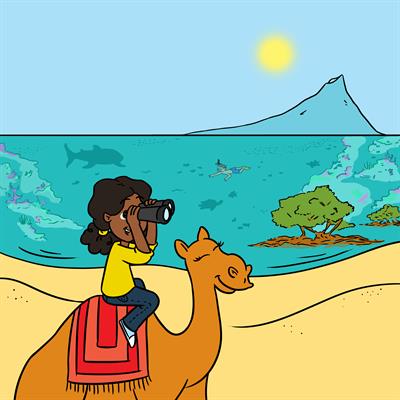
地球上一个陌生的地方:红海作为未来海洋的模型
集合编辑器
Rúben Costa, Christian Voolstra的观点
285767年的观点参与部分万博manbetxapp最新
提交截止日期
关闭
manbetxapp在线登录
关于这个系列
我们的海洋正在发生变化。温室气体的增加导致地球平均温度升高(或全球变暖),并导致所谓的气候变化。这反过来又对海洋和生活在其中的生物产生了巨大的影响。考虑到海洋变化如此之快,海洋生物是如何受到影响的?他们能适应吗?我们如何研究这些适应性?我们应该从哪里开始呢?
在非洲和亚洲之间的中东地区,有一大片海水,其南端与印度洋相连。这片水域被称为红海,有人说是因为它的水域中存在一种红褐色的蓝藻,也有人说是因为红色在古代是代表“南方”(地中海文明)的颜色。它的位置使它具有独特的环境,高温和盐度(即溶解在水中的盐的量),在其两千多公里的长度中创造了从北到南的复杂环境梯度。尽管条件恶劣,几乎是外来的,但红海是大片绿色红树林、一千多种鱼类(其中许多是红海独有的)、数百种珊瑚和无数无脊椎动物的家园。在微观层面上,我们每天都有新的发现,因此我们对细菌、微藻和病毒多样性的认识不断增加。
但是,如果这种环境似乎很难维持生命,那么所有这些生物是如何在其中繁荣发展的呢?这是科学家们试图通过研究红海的生物(生物群)以及温度、盐度和营养物质等非生物因素以及它们如何影响生物来回答的许多问题之一。由于其极端条件,红海是研究和了解气候变化对生态系统影响的独特实验室:它代表了一台时间机器,使我们能够展望热带海洋的未来,并让我们了解生物如何在极端环境中茁壮成长。
该系列的目的是探索我们目前对红海生物多样性及其对环境变化的适应性的了解。从珊瑚和它们的藻类伙伴之间的互利关系(共生关系),它们的保护,以及红海在为其邻国提供食物来源方面的作用,我们渴望了解生命是如何在逆境中找到蓬勃发展的方法的。更重要的是,通过了解红海的现状,我们或许能够预测其他地区的生物将如何适应气候变化。
你愿意参加这个集锦吗?
对于有兴趣提交此合集的研究人员,请参阅我们的作者指南,并在提交之前检查您是否包含所有要点



















